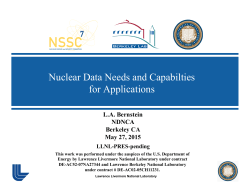
Family Law Barbara Glesner Fines 1-511 Holmes 235-2380
Family Law Barbara Glesner Fines 1-511 Holmes 235-2380 Why Family Law? Fundamental understanding of law Bar preparation generally and specifically Preparation for practice Foundation for further study What will we learn? Doctrine Themes Skills Substantive Doctrine Defining Family Regulating Family Reorganizing Family Themes in family law Public v. private ordering – Should the government regulate family? When? Why? How? Is the law a good tool for regulating family? Who should decide? Who should decide? Government? Which one? Family? Which one? HOW do we decide who should decide? What Standards? Moral? Social? Economic? Psychological? Legal? Personal? What is a Family? How do we label families? “Nuclear Family” Single-parent (never-married, divorced, widowed) Blended (Steps and Halves) Adoptive Foster Extended Non-traditional Census definition “Two or more persons, living in the same household, and related by blood, marriage or adoption.” Census: Families & Non-Families Non-family Family Family Compositions Other Solo Other family Married w/ kids Married no kids What is the Law’s Definition of “Family”? • It Depends: The legal definition of “family”, like the body of family law itself, is not a unitary concept derived from a single area of legislation or a single branch of case law What purposes are served by a legal definition of family? A legal definition of family: Regulates responsibilities and authority between individuals. Regulates access to important social benefits. May confer psychological and social consequences also. What Constitutional Considerations are Implicated by a Legal Definition of Family? Characterizing the personal interest affected “Fundamental interests” or interests affecting “protected classes” require "strict scrutiny" If not a fundamental interest or protected class, use the "rational basis" test Describe the “fundamental interest” the court was protecting in Moore v. City of East Cleveland. How might the law define “family”? Formalism v. Functionalism Formalistic Definitions Defines family relationships according to the model of the traditional nuclear family. Recognizes only individuals related to each other by the bonds of blood, adoption, or marriage. Advantages & Disadvantages of Formalism Favors the traditional “nuclear” family over all others Clear, predictable standard But, may be both over-inclusive and under-inclusive. Functional Definition of Family Asks whether a relationship shares the essential characteristics of a traditionally accepted relationship and fulfills the same human needs. Functional characteristics 1. the exclusivity and longevity of the relationship, 2. the level of emotional and financial commitment, 3. the manner in which the parties have conducted their everyday lives 4. held themselves out to society, 5. reliance placed upon one another for daily family services. Reasons for Shift to a Functional Approach Reflects change in societal makeup Reflects changes in gender role May better serve statutory purposes Costs of Functional Approach Indeterminant Intrusive Inappropriate Interviewing Exercise Active Listening truly wish to learn, keep focused on them (not yourself) verify content verify (non-judgmentally) emotions. Next Class Constitutional Framework: Read 95-134; 839-870 (Zablocki, Goodridge & Lawrence) Skim Text pp. 134-48 Mo. Rev. Stat. 451.090; 451.020; 451.030 and 451.022
© Copyright 2025





















